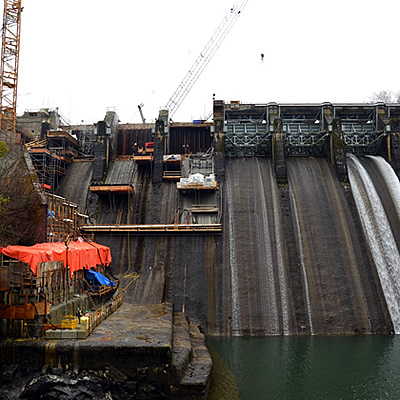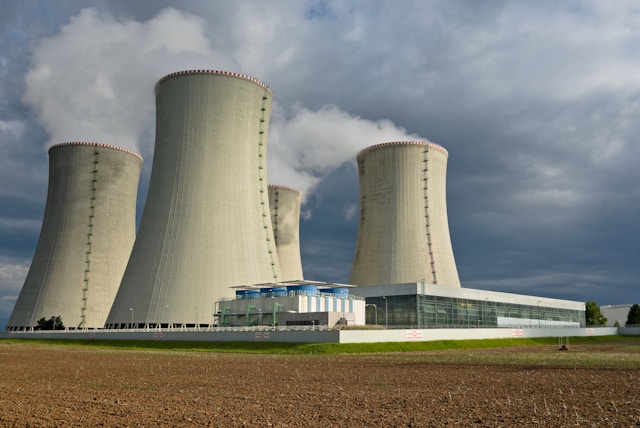Regenerating the Ruskin Dam and Powerhouse

The old spillway gates have been removed to make way for the new gates, which are designed to withstand a major earthquake. — photo courtesy BC Hydr
The old spillway gates have been removed to make way for the new gates, which are designed to withstand a major earthquake. — photo courtesy BC Hydro
A six-year, $10-million study conducted by BC Hydro identified the Ruskin Dam and Powerhouse in Mission, B.C., as one of several hydroelectric facilities in the province that are in need of seismic upgrades. With that in mind, BC Hydro has invested $748 million into a six-year project to retrofit this 85-year-old facility with modern equipment and the capability to withstand a one-in-10,000-year earthquake.
The Ruskin Dam & Powerhouse upgrade project, which began in 2012, is being phased in. Phase 1 saw the powerhouse receive a structural upgrade and the right bank of the dam reinforced with a special cut-off wall to control and manage seepage.
Phase 2, which is taking place right now, includes the installation of six new piers and five new spillway gates. The dam is also being anchored and the single-lane roadway on top is being made into a two-lane roadway with a pedestrian walkway.
By the time it is finished in the fall of 2017, the facility will also have new equipment in the powerhouse and a new switchyard.
A project of this magnitude comes with its own set of challenges, but according to the senior construction manager, Robert Peever, the Ruskin Dam and Powerhouse was done right when it was first built in the 1930s.
“It’s amazing the good workmanship that we come across,” said Peever. “From time to time, we bump into stuff that surprises us, but when you think of the equipment and the tools that they had to deal with, it’s amazing what they actually did.”
Voith Hydro Inc., Golder Associates, HMI Construction Inc. and Flatiron have been awarded contracts on this project. Due to the complexity of the project, however, BC Hydro has chosen to serve as the general contractor.
According to Peever, the Ruskin Dam and Powerhouse upgrade will generate over 1,000 person years of employment, and it will peak with about 300 workers on site. Right now, there are approximately 250 workers on site and many of them are local.
Since the project is in close proximity to the city of Mission, there have been some traffic and noise disruptions caused by construction activities, but Peever said BC Hydro met with neighbours of the dam and the community in advance to discuss these issues. So far, he said, they have been supportive of the project.
“I think they all know it’s an old facility and for safety’s sake, it needs to be upgraded, and they kind of consider themselves a part of it,” said Peever.
Recreation areas on the Hayward Lake Reservoir above the dam have been affected, too, but keeping water levels consistent remains a top priority for BC Hydro.
“Because we are under operation during construction, one of our primary focuses is making sure the water elevations are looked after,” said Peever.
Fish habitat is another area of concern but it is being addressed with the upgrades.
“We are putting in new sump systems and new oil water separator systems and just the reliability of the new units themselves will protect the fish habitat downstream,” said Peever. “The reason I say that is because the Stave River, its prime water source, comes through the generating units and some of the old units can trip offline and we have to open the spillway gates to try and keep the flow moving, so it really helps to augment the security of the downstream resources.”
Upon completion, the Ruskin Dam and Powerhouse will be safer, more efficient, better able to withstand a major earthquake and it will continue to provide clean, reliable energy to about 33,000 homes for the next 75 years.



